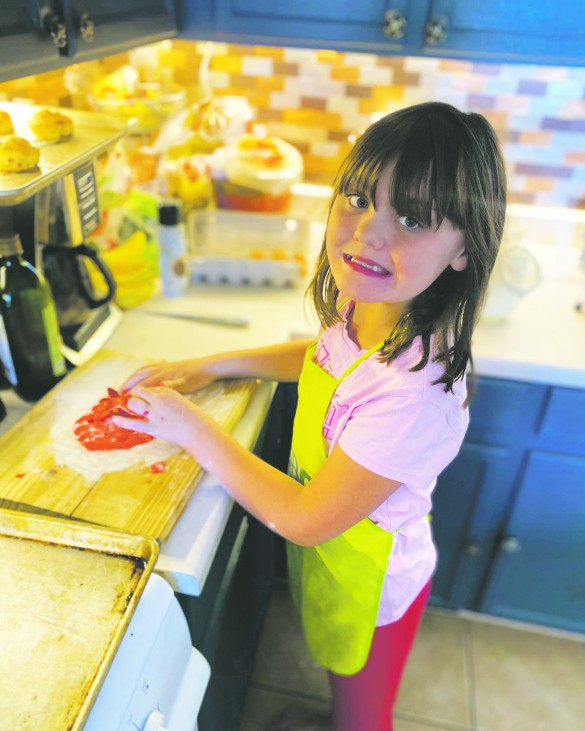Thinking Outside the Lunchbox
Thinking Outside the Lunchbox
July 14, 2023By GWYNNE ANN UNRUH

For many parents, packing their children’s lunches and snacks can feel like a game of guesswork. Will they eat it, or not? When we’re busy, we often look for the easy way out…. prepackaged lunchables, for example. Kids love prepackaged mini-meals, but they are full of processed foods that are loaded with sodium and other preservatives.
When they start to attend school, children begin to make lifestyle choices of their own. They learn quickly and are easily influenced by friends and that ever-persistent advertising hype. This is the time in their lives to talk about and encourage them to develop healthy food habits.
When your children ask for a prepackaged lunch, offer to make them one of their very own. Involve them in the process and their lunch boxes just might come back empty at the end of the school day.
Kids’ growing minds and bodies need good nutrients to promote happy, healthy and strong students. Preschool and elementary school years are the critical times to support your children’s understanding and development of healthy eating habits for life.
Eating healthy lunches and snacks will help them concentrate and have lots of energy to play throughout the day. As you talk to your children, discuss what they would like to have included in their lunch box. Make lists with them and take them shopping so they can become creative in healthy food choices.
Here are the basics of a homemade lunchable. Including an item from each group below ensures your child has a balanced meal. Pack lots of colors. Phytochemicals that give plants their different colors provide different health benefits. A variety of fruits and vegetables boosts the nutrient content of meals.
Fresh or Tinned Fruit. Have dried fruit occasionally but avoid dried fruit bars and fruit ‘straps,’ which are low in fiber, high in sugar and can stick to children’s teeth, causing tooth decay.
Fresh Veggies. Try thinly cut cherry tomatoes, carrot sticks or cucumber sticks with dip or a small container with mixed vegetables. Your child can help you make veggie dip for the upcoming week.
Dairy/Dairy Alternative. Include milk, yogurt, cheese or dairy alternatives like rice drink, soy yogurt or even vegan cheese sticks.
Protein. Try lean meat, a hard-boiled egg or nut butters, unless your school has a nut-free policy. Good choices include cheese sticks, hummus, edamame, egg slices or nuts and seeds. Avoid hydrogenated fats.
Grains. Bread roll, flat bread, fruit bread or crackers (wholegrain or gluten free).

Avoid dairy desserts, chocolate bars and muesli bars. They are generally high in fat and sugar, as are chocolate spreads, jams and honey in sandwiches. Also avoid packing fatty, salty processed meats like salami and bologna as well as processed cheese. Read labels and teach your child to read them too.
Skip the cookie or a piece of candy. These items should be an occasional treat. However, don’t feel like you should say no to every treat they ask for.
Rethink Their Drink. Avoiding foods high in sugar is the number one lesson you can teach your child. Sometimes we have to teach ourselves as well. Avoid sugary concentrated drinks and juice boxes that pack calories and can result in kids wild on a sugar high running around the classroom. Fruit drinks, sports drinks, energy drinks, flavored waters, flavored mineral waters, iced teas and soft drinks are high in sugar and can lead to weight gain and oral health problems.
Get your children in the habit of packing their own reusable water bottle every day. Add a slice of lemon or lime for taste. Avoid cheap plastic water bottles in favor of a heavy more durable one with a large open lid so it’s easy to clean.
Easy Eating Tips. Use leftovers. These can make a healthy addition to your child’s lunch and save you time. Eliminate extra cleanups and pack lunches when preparing meals or putting them away. If you're slicing cucumbers and carrots for a salad, cooking pasta or making dollar pancakes, set a little extra aside. Last minute packing of healthy lunches can cause stress. When time is short, convenience foods rule.
To make things easier to eat, especially if your child is at the age where the tooth fairy comes regularly, cut food items bite size, including fruit. For picky eaters, make the food small using thin cuts. Make their food look interesting. Cut diagonally or create rectangles and diamond shapes.
Kids love to dip their food. What’s small to you is super-size for them. They also have less of a tendency to stuff food if the bites are small. Keep lunch boxes cool when it’s hot by sending frozen milk, yogurt or water or even frozen orange segments. Use a freezer pack with any meat. Children love color. Go for it by providing a variety of vegetables and fruits.




